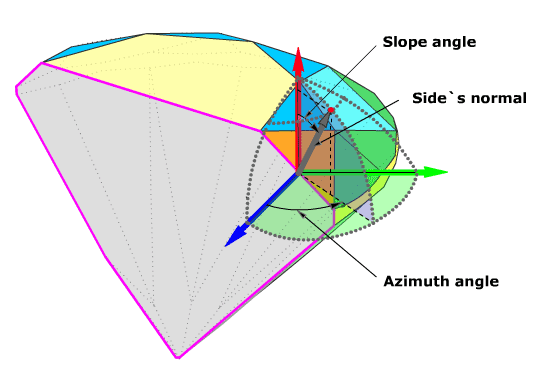|
Applicable to:
- Brilliant
- Rounded Fancies / Marquise, Oval, Pear
All facets of the Brilliant, Marquise, Oval
and Pear cuts may be divided into layers: main crown facets,
upper facets, star facets, main pavilion facets, lower girdle facets (halves)(figure 1).
Figure 1. Facets of a diamond. 
Facets of each layer are sorted by azimuth,
then the slope and azimuth of each facet is estimated. The
azimuth is measured in the range from 0 to 360 degrees. The
slope is measured in the range from 0 to 90 degrees. Table
facet has zero slope (figure 2).
Figure 2. Measurements of slope angle and azimuth angle for the main facet.

The slope angle of the crown main facet is the Crown angle in the Helium report.
Figure 3. Crown angle and pavilion angle. 
Comprehensive list of the Helium report parameters:
Measurements are used in different systems and tools:
|




















